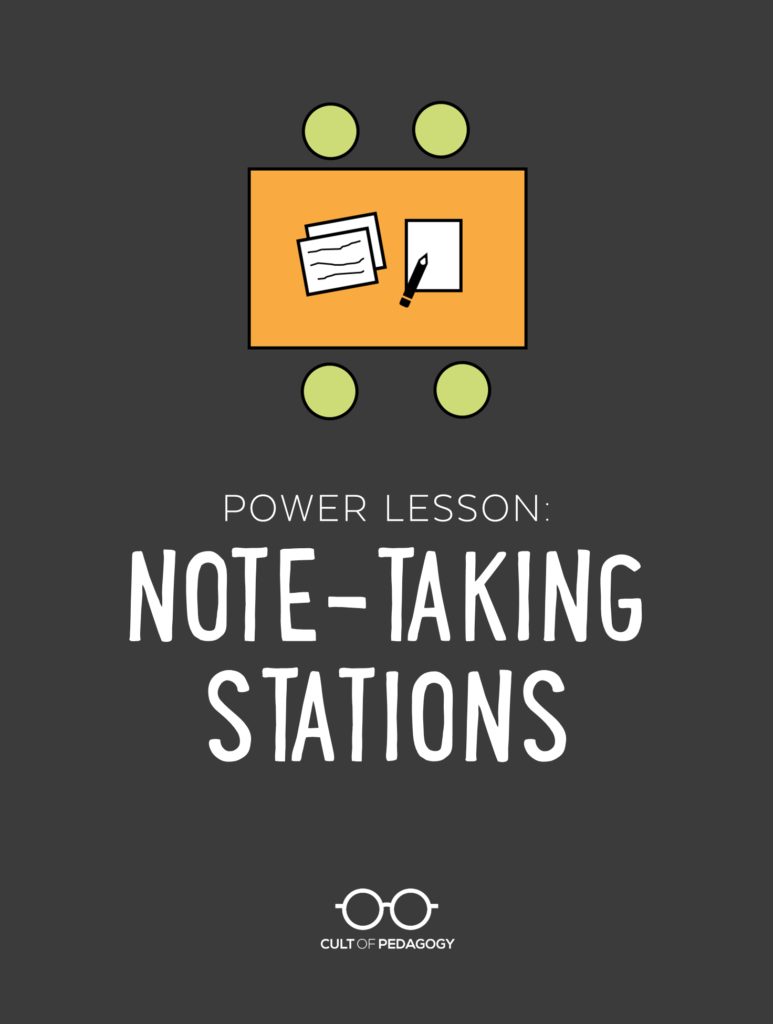
Listen to the interview with Peg Grafwallner and Abby Felten (transcript):
Sponsored by Peergrade and Microsoft Hacking STEM
In this power lesson shared by instructional coach Peg Grafwallner, students rotate between four stations to practice different note-taking styles.
In my work as an instructional coach and reading specialist at Ronald Reagan IB high school, a large, diverse urban school in Milwaukee, I support teachers in all content areas and help them to seamlessly embed literacy skills in their lessons.
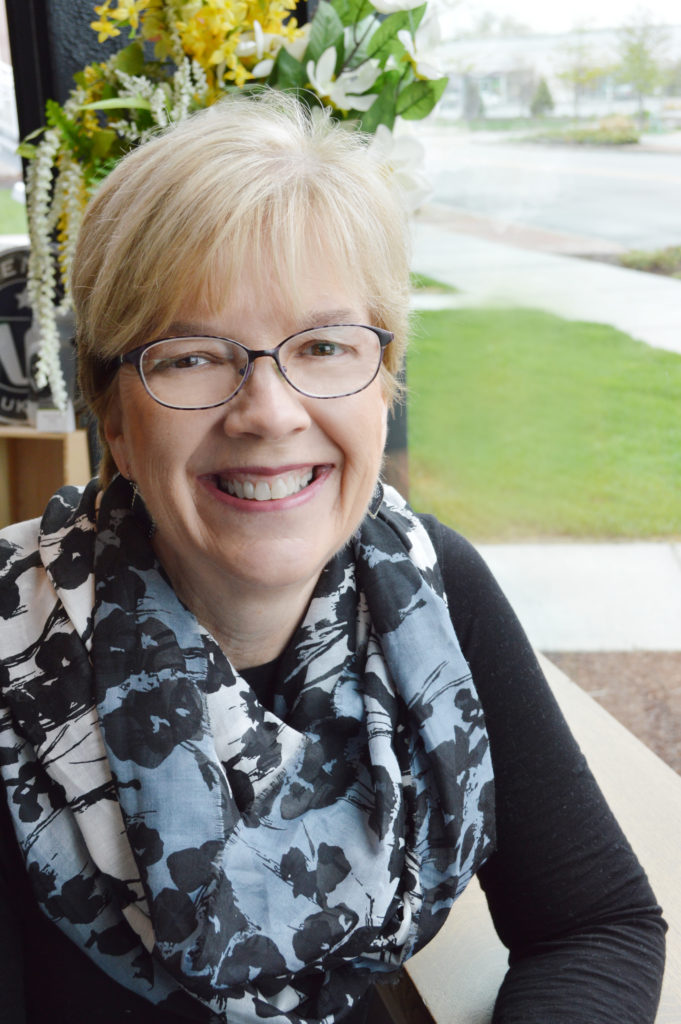
Abby Felten is one of our chemistry teachers at Reagan. Abby noticed that her sophomore students had extremely limited experience in reading a science textbook. As a result, their note-taking skills were inadequate when trying to gather information from the text. We decided to create a structured lesson that utilized stations to give students an opportunity to practice with various types of note-taking styles.
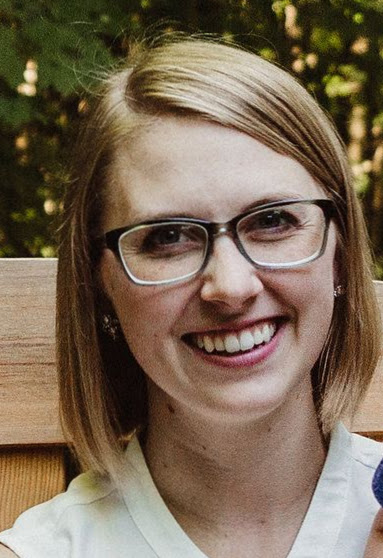
Gathering the Resources
I gathered three types of note-taking templates: a concept map, a Doug Buehl-inspired graphic organizer called a magnet summary, and Cornell notes; along with annotation, these would make up the four stations.
At each station, we set up a completed example of that type of template so students could see how it’s done. To create the examples, we used pages from the students’ chemistry textbook. Abby chose one small section for each template along with a page for annotation, and I made one copy of the designated pages. She didn’t give me any directions or a quick lesson in basic chemistry; instead, it was up to me to figure out which template worked best for each page.
I decided to use Cornell notes for the page with the most text. The Cornell template lent itself to text where the notes could be neatly arranged, writing key words or questions on the left side and definitions or brief phrases on the right side.
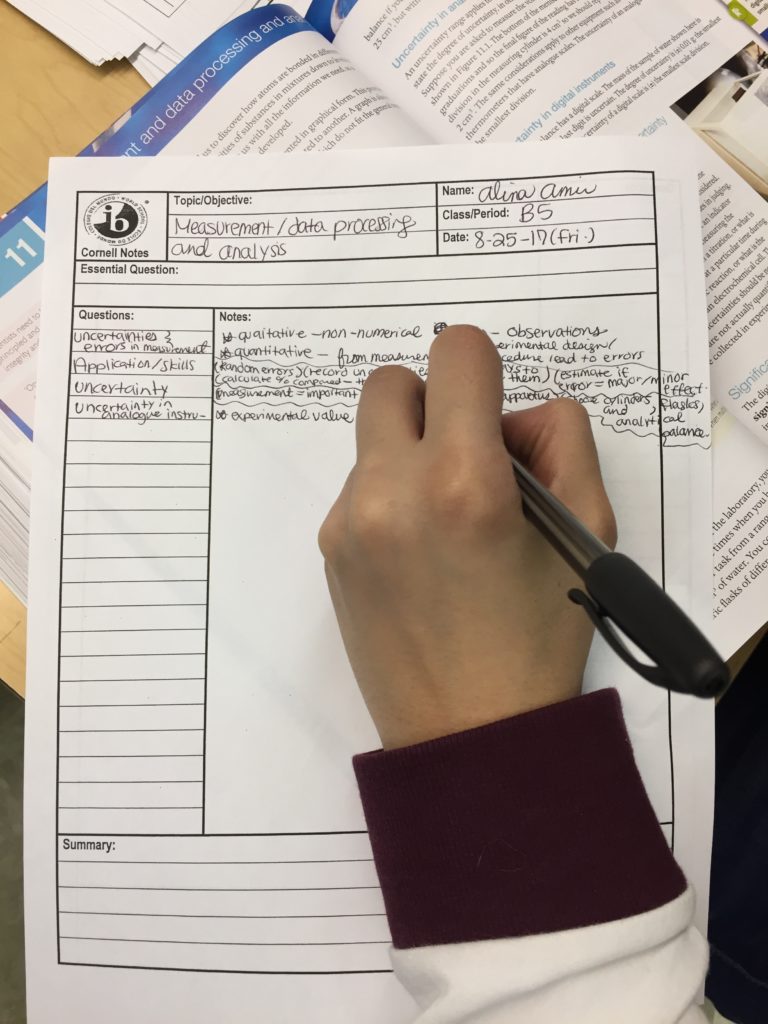
(These photos show student work, not the teacher-generated examples.)
Next, I chose the concept map for the pages with pictures and text. I wrote the main idea of the text in the middle box and used the surrounding boxes for details or formulas.
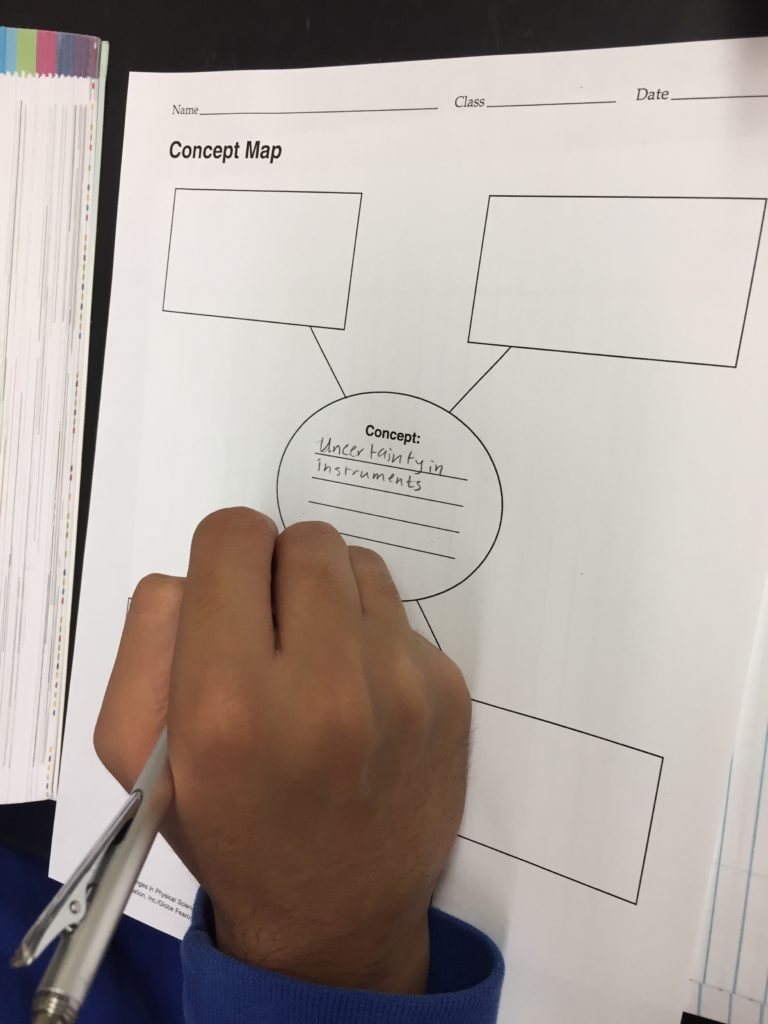
For the magnet summary template, I also used pages with pictures and text. Again, I wrote the main idea in the middle box and the details in surrounding boxes. Then I wrote a brief summary using the middle box as my topic sentence, and the surrounding boxes as sentence details.
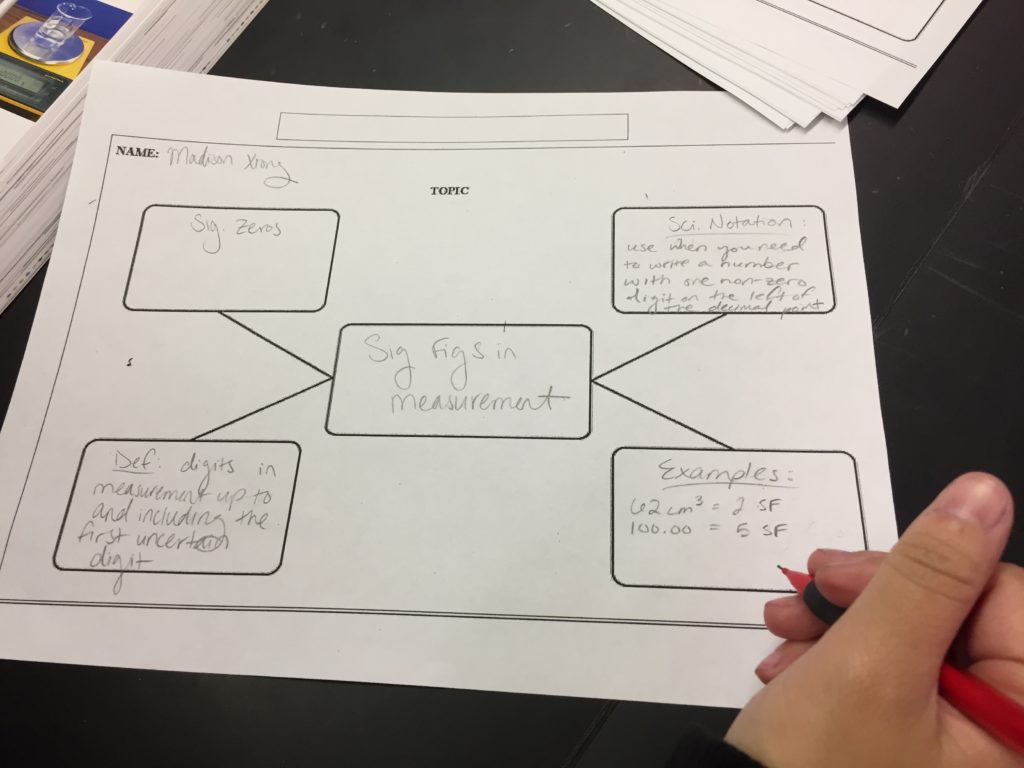
Finally, I annotated the page with the most pictures and formulas, asking questions, making comments, or circling unknown vocabulary in the margins.
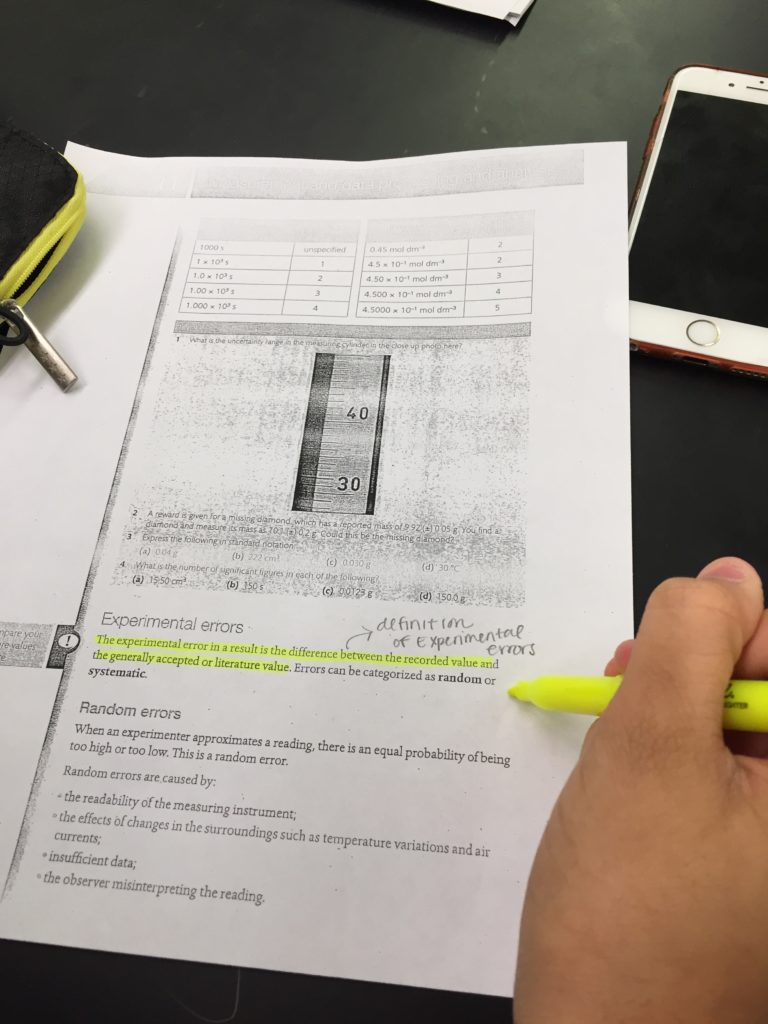
I shared my completed note-taking templates along with the annotated page with Abby. After her review, we put the pages in plastic sheets to use as exemplars at each station.
Implementation
In this particular sophomore class, Abby had about 25 students sitting at traditional science tables. Students were given four new pages to annotate or take notes on. We didn’t want them to take notes on the pages I had used for my examples; rather, we wanted them to try four new pages from the text, but use the exemplars as visual representations.
We created four stations: one for each of the four note-taking styles, along with several blank copies of the template. At the annotation station, we made several copies of the chemistry page that students were expected to annotate. We decided students would spend approximately 15 minutes at each station, including time to read the corresponding section from their chemistry text.
Abby described the directions and purpose for the lesson. She clarified that she wanted to introduce students to various note-taking templates in addition to them practicing different types. I offered brief directions for each template, demonstrating how to use each one with the exemplars.
Finally, Abby set the timer. Students began reading the information in their chemistry books and reviewing the exemplars at their tables. Next, they grabbed blank note-taking templates and began to write their notes. Abby and I walked around the room, observing what students were writing. We encouraged students to work together, to talk to each other and see how their peers were writing their notes.
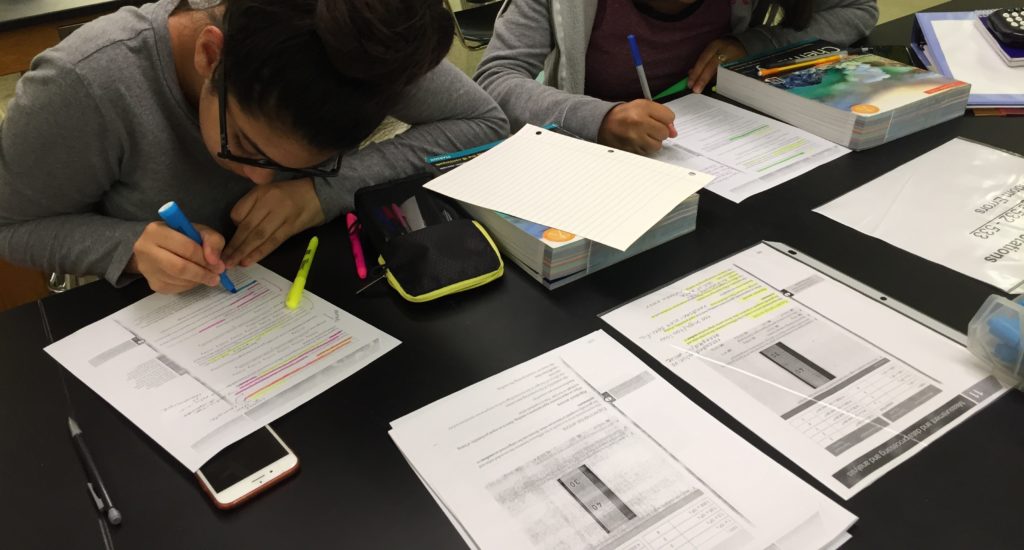
After 15 minutes, the timer went off and students rotated to the next station. For the first couple of minutes, the room was silent as students read the page assigned to that station. Then the room filled with chatter as students reviewed the exemplar, wrote their notes and shared their information. At the magnet summary station, we noticed students sharing their summaries and verifying that they were similar.
Student Debrief
After students had visited all four stations, we gave them time to debrief with their peers about the lesson, then we asked their opinions.
- Was the lesson helpful? Overwhelmingly, students said yes! They liked the idea of stations and physically moving from one area to another.
- They appreciated having the opportunity to practice note-taking, especially with an exemplar to use as a visual reference.
- Students felt some of the templates did not lend themselves to the particular chemistry page at that station. For example, several students said the boxes on the concept map were too small, and bigger boxes would have helped.
- Students were split on writing a summary, which was part of the magnet summary template. Some appreciated putting their thoughts on paper in summary form, while others drew a flowchart in the summary text box to help them digest the information.
- Some students didn’t like using concept maps at all and would have preferred the Cornell template for all of the notes, or would have preferred to annotate all four pages of the reading; they felt the boxes were too restrictive.
- Several students commented that they would use all of the templates, but use them according to what was on the page. For example, if a particular page was text-heavy, they would use Cornell notes. If there were formulas on the page, then a concept map—of their own making—would be the way to go.
- Finally, many students shared how mentally “tired” they felt after reading and taking notes on about three-and-a-half pages of text. The reading, processing, note-taking and re-reading proved to be very brain-intensive for our students, which inspired Abby and I to plan several more note-taking lessons to help students hone this significant skill.
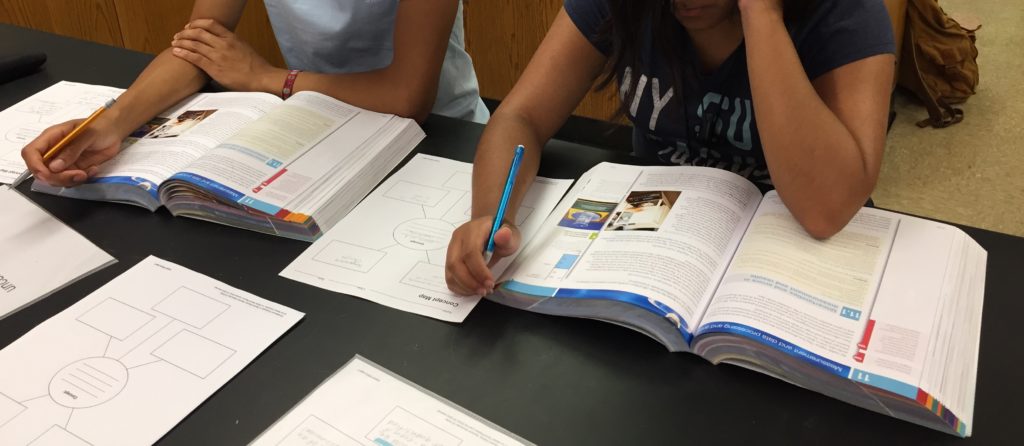
Teacher Reflection
Abby and I felt that this lesson was a success. Since giving the lesson, she has seen explicit improvements in the ways her students approach reading and taking notes. Those improvements include:
- Their notes are neater, more organized and meaningful. Students aren’t just rewriting the text—they are adding their own thoughts, questions and images into their notes. They’re taking pride in their notes.
- Students are varying their own note-taking styles to match the style of text. They’re creating concept maps when the class covers topics that are interconnected and not so linear, using Cornell notes when learning scientific theories and linear processes, and drawing out their ideas and processes instead of writing everything out.
- Students are actually using their notes! They are editing and revising their notes as the class does more practice and examples. Notes aren’t just a thing they have to do in class anymore. Students are using them to review.
- Students are more engaged with a text. Abby has found that she needs to limit the quantity of text that she asks them to read and take notes on to encourage this, but she’d rather take quality over quantity, especially at the sophomore level. Their comprehension of the information they have read has increased, as has the depth of their questions in class.
- Students can synthesize information more readily. One of the extension activities that Abby has done after the note-taking stations is having them consolidate a full unit of notes to a single page—front and back—of a graphic organizer or plain paper. This synthesis of information is now significantly easier and more meaningful for them.
Finally, as an instructional coach, I have shared this lesson, with content modifications, in other disciplines and with all student abilities. The opportunity for student ownership and the chance to choose is what makes this lesson timeless and engaging—exactly what our students need for success! ♦
Resources:
Buehl, D. (2017). Classroom Strategies for Interactive Learning. New York, NY: Stenhouse Publishers.
(The above is an Amazon affiliate link. Cult of Pedagogy receives a small commission on any purchase made when visiting Amazon through this link at no extra cost to you.)
Join our mailing list and get weekly tips, tools, and inspiration that will make your teaching more effective and fun. You’ll get access to our members-only library of free downloads, including 20 Ways to Cut Your Grading Time in Half, the e-booklet that has helped thousands of teachers save time on grading. Over 50,000 teachers have already joined—come on in.


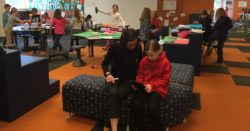
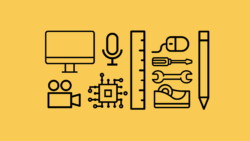
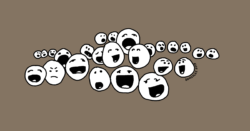
I can’t wait to modify this for my 8th grade ELA 45 minute classes!
Hi Kelly,
I’m so glad you like the lesson. Check out https://www.peggrafwallner.com/engagement-resources/ for the graphic organizers. Let me know if I can help!
Thanks again!
Peg
That’s great, Kelly! Please let me know how I can help. Also, all graphic organizers can be found at https://www.peggrafwallner.com/engagement-resources/.
This is a great lesson! I think I would add some sort of hanging-indent note taking so students have another way to think about taking down main idea and supporting detail(s).
As I think about this year’s students (middle school), I wonder whether many of them would be able to handle that much handwriting in one session. Increasingly, I find that students cannot or will not write by hand, even printing; they want to keyboard exclusively. This year I’ve had several protest taking notes by hand. I’d be interested to know what others are seeing, how they’re addressing this (if they are), and how this lesson might be adapted to incorporate less handwriting. (Don’t misunderstand–the lesson is great, and ideally I will/would teach it as written! I’m just thinking ahead…)
Hi Barbara,
While I certainly hear you, you might want to share this article w/ them about the advantages in taking notes by hand (https://www.scientificamerican.com/article/a-learning-secret-don-t-take-notes-with-a-laptop/ and https://www.npr.org/2016/04/17/474525392/attention-students-put-your-laptops-away). My recommendation: Start w/ two stations, instead of four, and introduce w/ a relevant paragraph from a current article or maybe even an example from their school newspaper. Take it slow…but take it! Good luck!
I have several students who are really getting into SketchNoting, and that has improved the quality and quantity of notes being taken. Some every artistic students are finding their “voice” through art.
Hi Jane,
Thank you for this wonderful suggestion. We need all kinds of choices for our students, and using SketchNotes is a great example of another choice.
Hi Barbara,
As a high school type thinking about next steps for my students, I am always worried about what they will see in college. I have three of my own in college now and they confirm that many exams are handwritten events. Some of my students have very poor handwriting and I fear that they will be at a disadvantage if prof’s or TA’s aren’t willing or able to put in the time to figure out what they have written. Letting my students know this has been effective for me when I have encountered handwriting protests!
Thank you, Daniel, for your excellent tip. I appreciate it!
I love this post! I’ve been using stations in my secondary classroom for many years and it is a lot of work up front to prepare but so worth it for the outcome. My favorite lesson with stations was written by me and a coach as well. It was intended to help students with perspectives from the trail of tears. It included complex narratives, paintings, maps and videos and it was one of the best lessons I ever “taught” because students were engaged in the material like never before. One additional strategy for stations specifically is that I structure my groups strategically by ability level. I make a few groups mixed with “high achieving” and “middle” kids and then one or two groups with “middle” and “low achieving” students. That way I can focus my support with those students who need more clarification, scaffolding, redirection, etc. and that has been really helpful. In other activities, heterogenous grouping is better, but for this instructional method I believe more homogenous groups worked best.
Excellent point! Thank you, Allysa. I’ll make sure to mention that to Abby and incorporate it again.
I am very surprised about not having students doing this in everylesson.Learning how to take notes should be taught from MS but teachers are getting lost in making all fun projects and we are losing the essence of learning and processing knowledge we want to please kids and taking notes imply effort and concentration if we don’t teach this we are not doing a favour to our future. For me was a must in my grade 6 science class. if a student read but and is not able to indentify the key words of the text then that student does read but not comprehend. Old school note taking forget technology. Thank you for your post cultofpedagogy.com
Hello Rebeca,
Thank you for your comment. It is important to teach note-taking in all grades (beginning w/ elementary), but it can be done in various ways. Hopefully, this article helps teachers to be cognizant of the value of note-taking skills and how all students can learn how to take good notes, regardless of what grade they are in.
What I love most about this is the Student Debrief section. Peg and Abby give the students voice and choice in what is effective for their individual learning. This is also an article about instructional coaching at its best. Peg expertly guides the teacher so Abby can in turn deftly guide her students. If you want more practical and wise advice, check out Peg’s new book, Lessons Learned from the Special Education Classroom. Her wisdom has transformed my teaching!
Thank you, Robert, for your kind words. The only way we get better as educators is by collaborating for the sake of our students. This lesson specifically demonstrates the value of collaboration and when done well, creates an opportunity for choice, voice and vigor (no more rigor!) for our kids.
Love this idea and cannot wait to share it at my school. I work at an inner city school and my kiddos get burnt out trying to write stuff down. Some either write everything and others, nothing at al!
Thank you‼️👏🏻👏🏻👏🏻
Hello Saba,
Yes, I hear you. Please let me know how I can help. I’d be happy to share some ideas w/ you in getting them ready for note-taking (annotation always comes first).
Thank you!
Hello Peg
I was wondering if you could share an exemplar for annotation that I could use with my on-level Physics kiddos. I have all levels of students from freshmen to seniors in my physics classes.
Thank you!
Hi Saba,
Check my website; I have a specific slide for annotation (https://static1.squarespace.com/static/589e4a5cb3db2b8a92758f5e/t/5980ebf6414fb55a8e5b90f9/1501621238708/Annotation.jpg). Also, there is a photo of annotation in the article. But, to make this easy, I tell kids to annotate for three components only: Questions, Comments and Vocabulary. In addition, if your kids aren’t sure what questions or comments to make, use Blooms or Webbs DoK to create sentence starters. I recommend three starters from each level. Also, I give a detailed example of how to use Annotation in my book(!); please consider checking it out.
I am just wondering if you can clarify a little bit between the magnet summary and the concept map. What would be the main difference in the notes that are written in the graphic organizer between these two methods?
Hi Stacey,
Thank you for the question. The difference is the summary. With a concept map, students can create their own “bubbles” of inquiry/comments/brainstorming (the one I used is visually similar to the MS). Encourage students to create their own concept map so they’re not limited by the # of boxes. Regarding the MS, students find the main idea (the middle box) and four details. Then when they write their summary, the main idea is the topic sentence and the four boxes are the corresponding details. Good luck and let me know how I can help.
This lesson is so awesome! During my ongoing teacher evolution, I have realized that students need support learning how to take notes every year. New class, new teacher, they need help getting back into the swing of things and some direct note-taking instruction has really helped and I’m always thrilled by how much my students appreciate when I go over notetaking. I love when they reference their improvement in their portfolios! Something else I’ve been trying to do this year is (1) post notetaking videos and tips/tricks to schoology so that when I read their notes and they look rough I can recommend videos for them to watch (2) using notetaking techniques in our in-class activities. So if I am going to have them listen to a podcast instead of saying “take notes” pushing myself to have them watch a short Cornell notes video before for review and then practice taking Cornell notes while we listen to the podcast. It’s pushed me to stop reinventing the wheel 🙂
Thanks so much for sharing this, Naadia!
Naadia, thank you for your comments. Please check out http://www.peggrafwallner.com for the graphic organizers for this lesson. Your suggestions are worthwhile; thank you for sharing them. Please let me know how the lesson goes; I’m happy to support you and the valuable work you do.
I just finished using this with my 8th grade Honors Physical Science students. I am in love with note-taking stations! My class is project based, but I have found some students are not making the content connections with project based. Having them read on their own and take their own notes is a powerful way to ensure they get the content background to go with the project. Also this is an outstanding way to get students to understand how they learn best. I will be adding note-taking stations (with varying note taking templates) to every unit I teach next year!!!
Patty,
It’s great to hear that you have had such great success with note-taking stations! Even more exciting to hear that you plan to add note-taking stations to every unit next year! Thanks for sharing.
Hi Patty, thank you for your comments. I’m so glad this worked for you! Great! Please let me know what I can do to support you and the important work you do. Consider this strategy and these skills when your students have dense reading to do (https://www.peggrafwallner.com/interventionsarticles/2018/10/23/how-to-jigsaw-a-literacy-lesson-in-physical-education). Thanks again!
This is wonderful! I have noticed over the last several years that we (teachers) lament about students’ poor note taking/usage of notes. How would you modify these stations to include how to take notes during a lecture or a flipped model using teacher generated videos?
Hi Rachel, thank you for the kind words.
I agree; teachers will often say that when students enter high school many of them “should” know how to take notes. But, they often don’t. This is one way to introduce them to various note-taking strategies and determine what strategy works best for the purpose and the text.
Regarding in-class lecture, I would consider the same concept. Let’s face it, as much as we refrain from lecturing to our students, every once in a while, we must impart information directly, and lecture is one of the best ways to do that. If you are giving information, I would offer Cornell two-column notes with lines and Cornell two-column notes without lines. Students who want to use the lines can write the information as given (https://static1.squarespace.com/static/589e4a5cb3db2b8a92758f5e/t/59d3da7d46c3c4443732ed4c/1507056253738/Cornell+Notes+Template+3.pdf); those students that prefer to sketch their notes or concept map their notes can do so on the Cornell blank sheet, but still have the left hand side for questions/main ideas (just omit the lines on the right side).
Regarding flipgrid, that might take a little more practice. In my experience, students are expected to watch a video or lecture at home (often taking notes), then be prepared to discuss the next day. I would begin with modeling how this might look for a particular flipgrid lesson. Perhaps model in class applying one of the note-taking strategies and help students determine which one might work best for that particular lesson. Also, encourage students to space out their notes so they can add to them later and encourage students to ask questions throughout their notes (Annotation Sentence Starters from https://www.amazon.com/Lessons-Learned-Special-Education-Classroom/dp/1475844263, page 52). If you email me (peggrafwallner@gmail.com), I would be happy to send the Sentence Starters to you.
I hope this helps!
I love this idea! Have you done something like this in a World Language classroom? So far I have used drawing notes, concept maps, and lists, but would love to incorporate other methods if possible. Just could use some guidance on it I suppose. 🙂
Hi Jenn,
I love this idea! I’m thinking World Languages could using note-taking stations when learning about a country’s background (demographics, geography/weather, main export, main occupations). Students could read an informative article about a country and apply the various note-taking stations when learning more about that country. Students could practice taking notes at each stations about a country and determine which station works best for them. Let’s continue the conversation at peggrafwallner@gmail.com. I’d love to brainstorm ideas with you.
Thank you for sharing this strategy. I am always looking for ways to incorporate movement into my classroom. What suggestions do you have for using this strategy for my American Literature class as I prepare them for the End-of-Course Assessment?
Hi Audrey,
Have you already created the End-of-Course assessment? If not, start with that. (see Backward Design) Once you have determined what kids need to be able to do in the end, then you can start planning the lessons that will get them there. Peg shares many resources on her website that might help with this.
As far as movement goes, I also recommend checking out this post and this one. The bottom line is to first identify what kids need to be able to do; only then can you choose a learning strategy, whether that’s some sort of note-taking, discussion, or something else. Hope this helps!